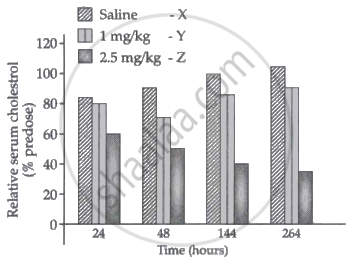Advertisements
Advertisements
प्रश्न
Highlight any four areas where genetic modification of plants has been useful.
उत्तर
Plants, bacteria, fungi and animals whose genes have been altered by manipulation_are called Genetically Modified Organisms (GMO). GM plants have been useful in many ways. Genetic modification has
- Made crops more tolerant to abiotic stresses (cold, drought, salt, heat).
- Reduced reliance on chemical pesticides (pest-resistant crops).
- Helped to reduce post-harvest losses.
- Increased efficiency of mineral usage by plants (this prevents early exhaustion of fertility of soil).
APPEARS IN
संबंधित प्रश्न
Organic farmers prefer biological control of diseases and pests to the use of chemicals for the same purpose. Justify.
Answer the following question.
List any four ways by which GMOs have been useful for enhanced crop output.
At what temperature milk gets pasteurised?
A protoxin is ______.
Bt cotton is not ______.
Assertion (A): In Bt cotton, B. thuringiensis produces a toxic insecticidal crystalline protein which destroys bollworms.
Reason (R): B. thuringiensis produces this toxic protein in an inactive form, but when an insect ingests this inactive protein, it is converted into active form of toxin due to the alkaline pH of gut which solubilises the crystals, which is responsible for the death of bollworm.
Expand GMO. How is it different from a hybrid?
Discuss the advantages of GMO.
Explain with the help of one example how genetically modified plants can:
- Reduce usage of chemical pesticides
- Enhance nutritional value of food crops
|
RNA interference (RNAi) holds great potential as a therapeutic agent for the treatment of human diseases and as biocontrol agents in controlling pests in the field agriculture. An experiment was carried to study the use of 'RNAi' for the potential treatment of disorders of cholesterol metabolism. Some people possess genetic mutations with elevated levels of ApoB gene which predisposes them to coronary artery diseases. Lowering the amount ApoB can reduce the number of lipoproteins and lower the blood cholesterol. Tracy Zimmerman and her colleagues used RNAi in 2006 to reduce the level of ApoB in non human primates Cynomolgus monkeys. One group of monkeys were given RNAi treatment (small interfering RNAs, SiRNAs) (doses 1 mg/kg, SiRNAs), second group of monkeys were given RNAi treatment (doses 2.5 mg/kg, SiRNAs) and third group of monkeys were injected with saline. |
The results of the study are depicted in the graph below:

- How does the treatment with 2.5 mg/kg bring an effect on cholesterol metabolism when compared from 24 hours and 144 hours?
- Write any two natural sources from where dsRNA molecule could be obtained for silencing the specific mRNA.
- How is RNAi used in controlling the infection on the roots of tobacco plants by the nematode Meloidogyne incognitia?
